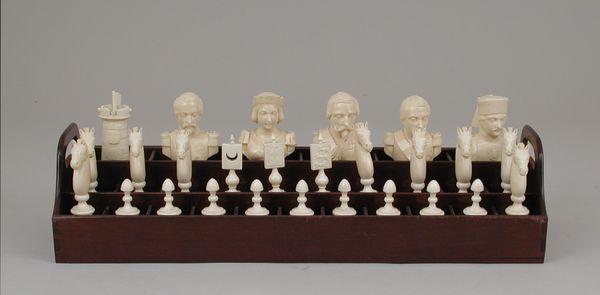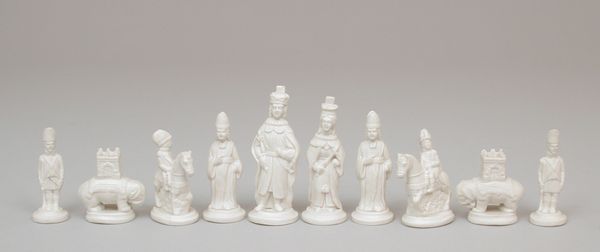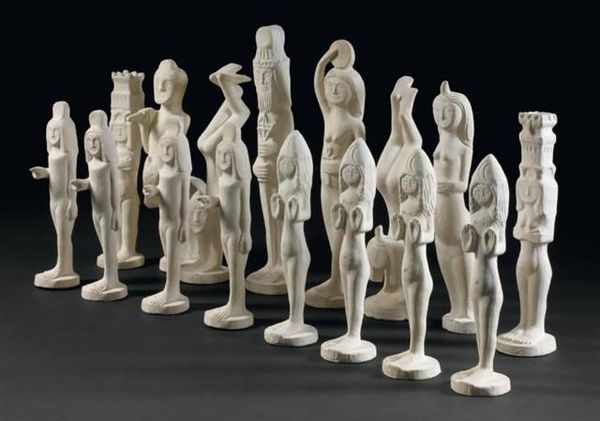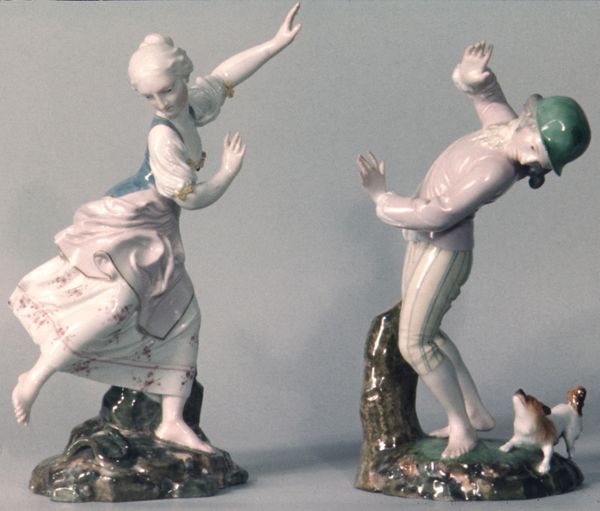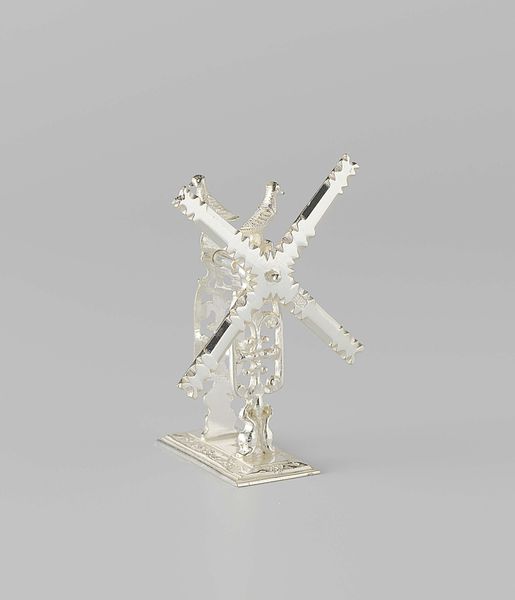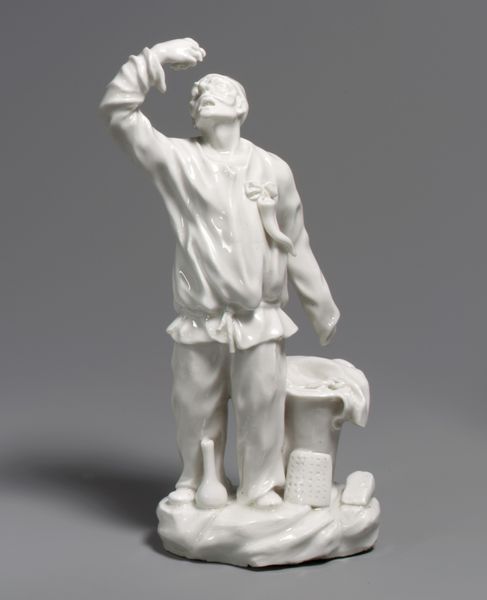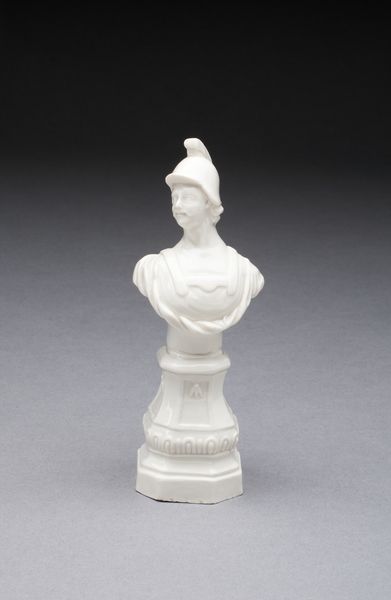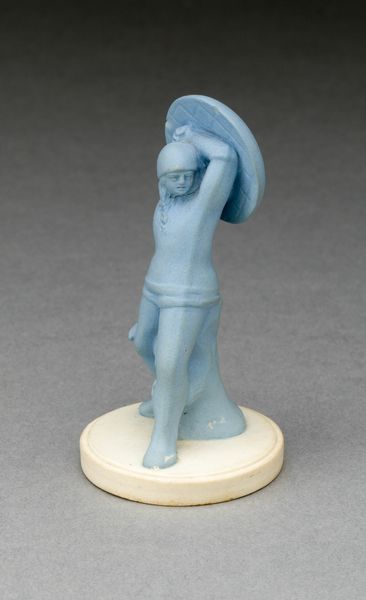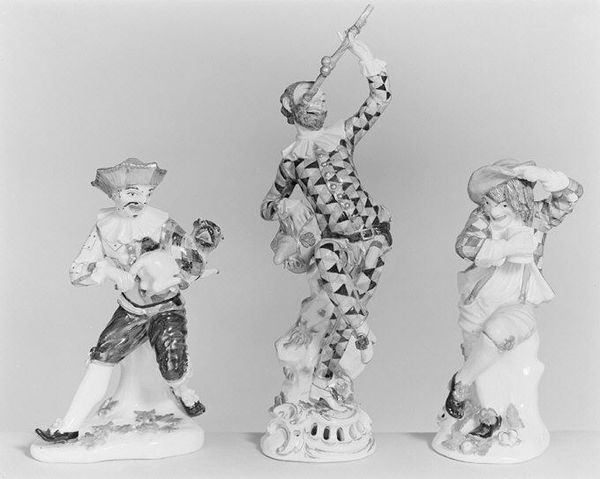
ceramic, sculpture
#
portrait
#
neoclacissism
#
ceramic
#
figuration
#
sculpture
#
decorative-art
#
miniature
Dimensions: Height (king): 4 in. (10.2 cm); Height (pawn): 2 in. (5.1 cm)
Copyright: Public Domain
These chessmen were made by John Flaxman, probably in the late 18th or early 19th century, from white biscuit porcelain. Biscuit refers to any unglazed ceramic ware that has undergone a single firing process. The figures have a soft, matte appearance, and a satisfying heft. Flaxman was a classically trained sculptor, so he would have modeled the forms in clay or wax before handing them off to a factory for production in porcelain, a material closely associated with aristocratic taste. But even with high-end porcelain, labor was intricately divided. One person would prepare the clay, another would cast the figures, and a third would add the fine details. In this context, Flaxman’s neoclassical designs become intriguing commentaries on the game of chess itself, where strategic calculations could be seen as a metaphor for the new economic order then taking shape. Even a game could reflect the realities of labor, politics, and consumption.
Comments
No comments
Be the first to comment and join the conversation on the ultimate creative platform.
